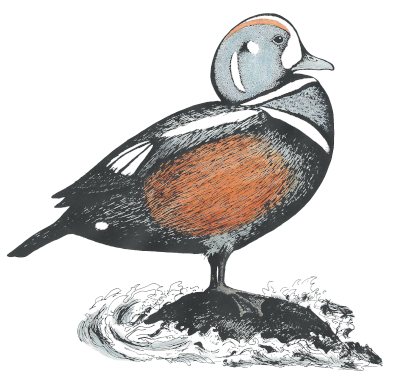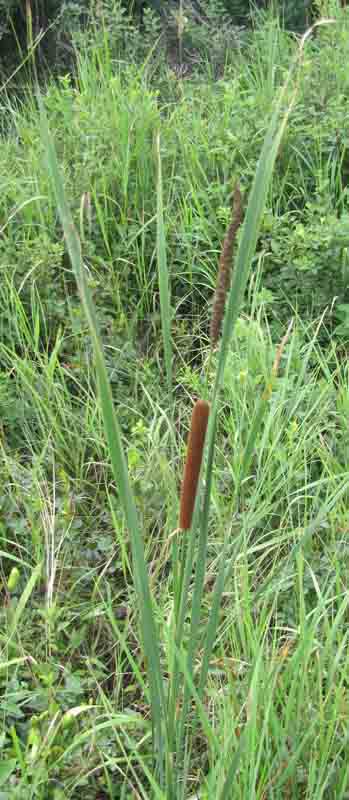
Typhaceae - cat-tail family
[information to be added]
Maine is home to 9 species in 2 genera (hybrids excluded). If you know which species you have or are interested in learning about, click on the appropriate link from the species list below. Otherwise, to determine which genus your plant belongs to, refer to the table below the species list.
Sparganium (7 species)
Sparganium americanum - American bur-reed
Sparganium androcladum - branched bur-reed
Sparganium angustifolium - narrow-leaved bur-reed
Sparganium emersum - simple-stemmed bur-reed
Sparganium eurycarpum - great bur-reed
Sparganium fluctuans - floating bur-reed (occasional)
Sparganium natans - arctic bur-reed (uncommon)
Typha (2 species)
Typha angustifolia - narrow-leaved cat-tail (rare)
Typha latifolia - broad-leaved cat-tail (occasional)
| char. 1 | char. 2 | |
| Sparganium | ||
| Typha |
Sparganium (bur-reed)
[information to be added]
| red font = character state unique or nearly so | char. 1 | char. 2 | char. 3 | char. 4 | char. 5 | char. 6 |
| S. americanum | ||||||
| S. androcladum | ||||||
| S. angustifolium | ||||||
| S. emersum | ||||||
| S. eurycarpum | ||||||
| S. fluctuans | ||||||
| S. natans |
Sparganium americium (American bur-reed) - [information to be added]
Sparganium androcladum (branched bur-reed) - [information to be added]
Sparganium angustifolium (narrow-leaved bur-reed) - [information to be added]
Sparganium emersum (simple-stemmed bur-reed) - [information to be added]
Sparganium eurycarpum (great bur-reed) - [information to be added]
Sparganium fluctuans (floating bur-reed) - [information to be added]
Sparganium nations (arctic bur-reed) - [information to be added]
Typha (cat-tail)
The staminate (i.e., pollen bearing) flowers grow together as a unit above the carpellate (i.e., seed bearing) flowers, which also grow together. According to volume 1 of Ancestral Plants2, before the staminate flowers and carpellate flowers are fully mature, they can be eaten raw or boiled and eaten like an ear of corn. (Because of the rarity of Typha anguvstifolia, be sure to confine foraging to the common Typha latifolia.) The previous year’s carpellate flowers appear as tan-colored “fluff”.
| leaf width | separation between staminate and carpellate flowers | |
| Typha angustifolia | 5–11 mm | present |
| Typha latifolia | 10–23 mm | absent |
Typha angustifolia (narrow-leaved cat-tail) - [information to be added]
The leaves of this plant are approximately 0.9 mm wide. Note the clear separation between the staminate flowers and the carpellate flowers (image below right).


(click on an image to enlarge)
Typha latifolia (broad-leaved cat-tail) - [information to be added]


(click on an image to enlarge)
Note:
1. Taxonomy and nomenclature follow Flora Novae Angliae by Arthur Haines (2011, Yale University Press, ISBN 978-0-300-17154-9).